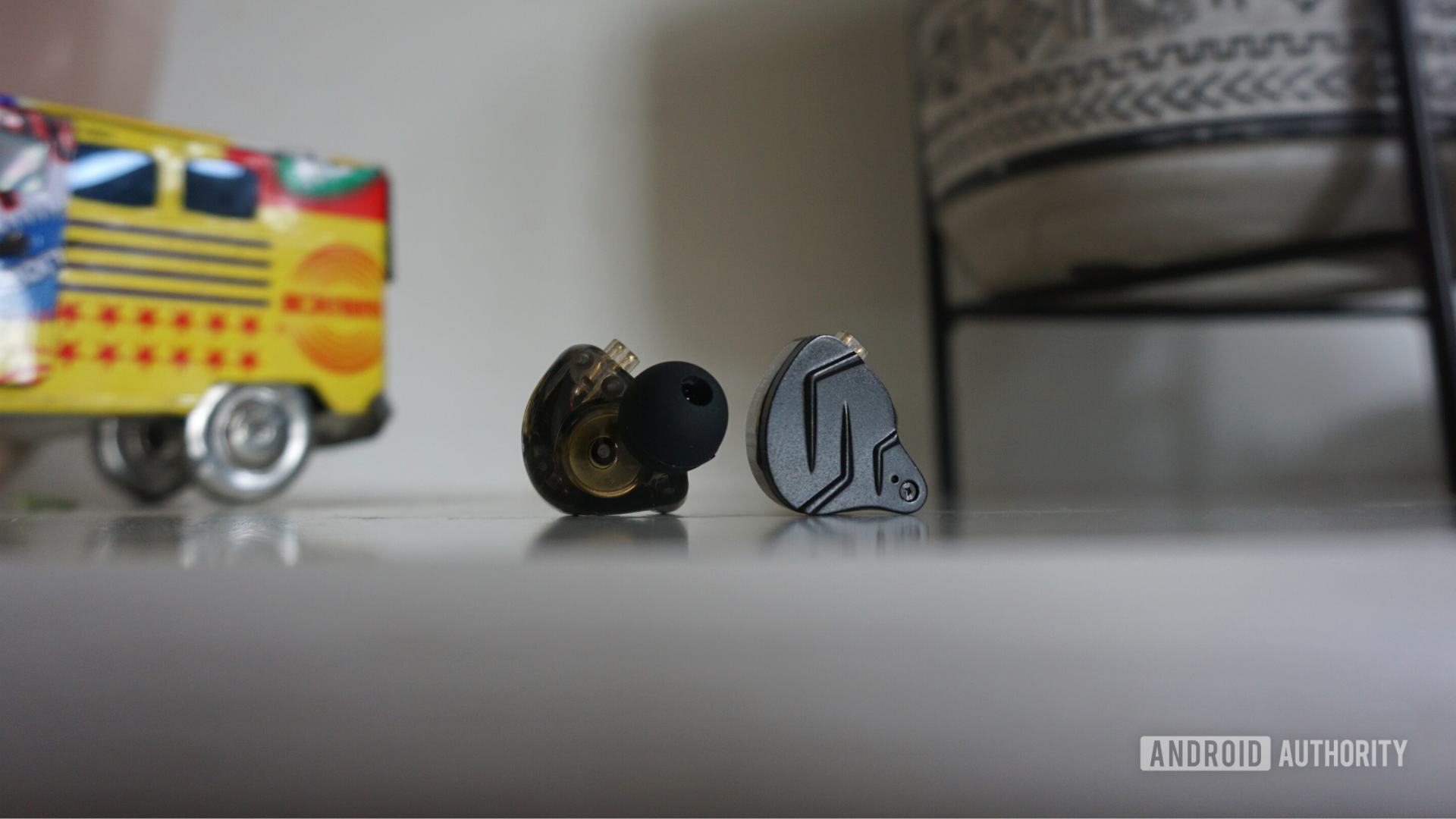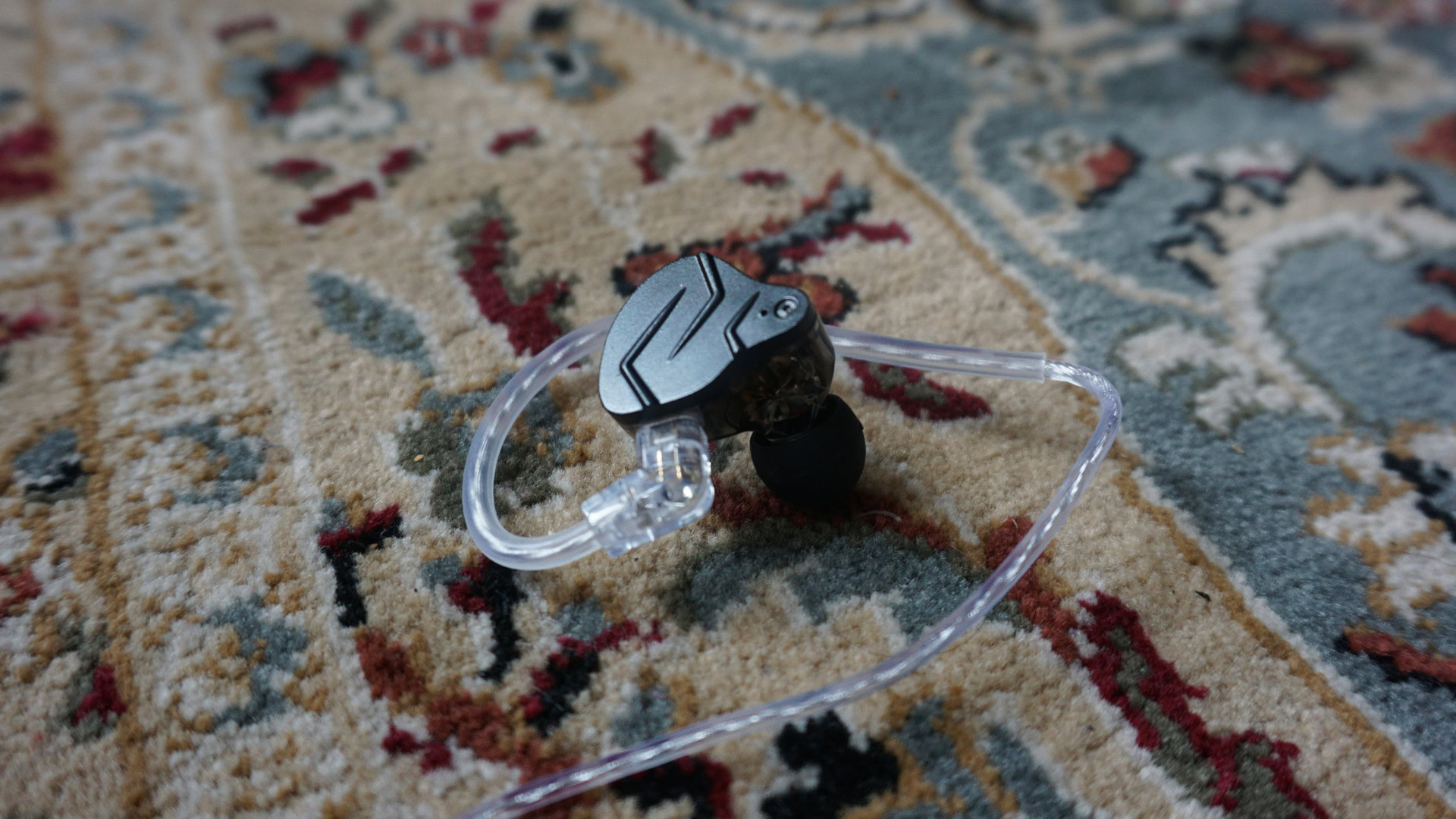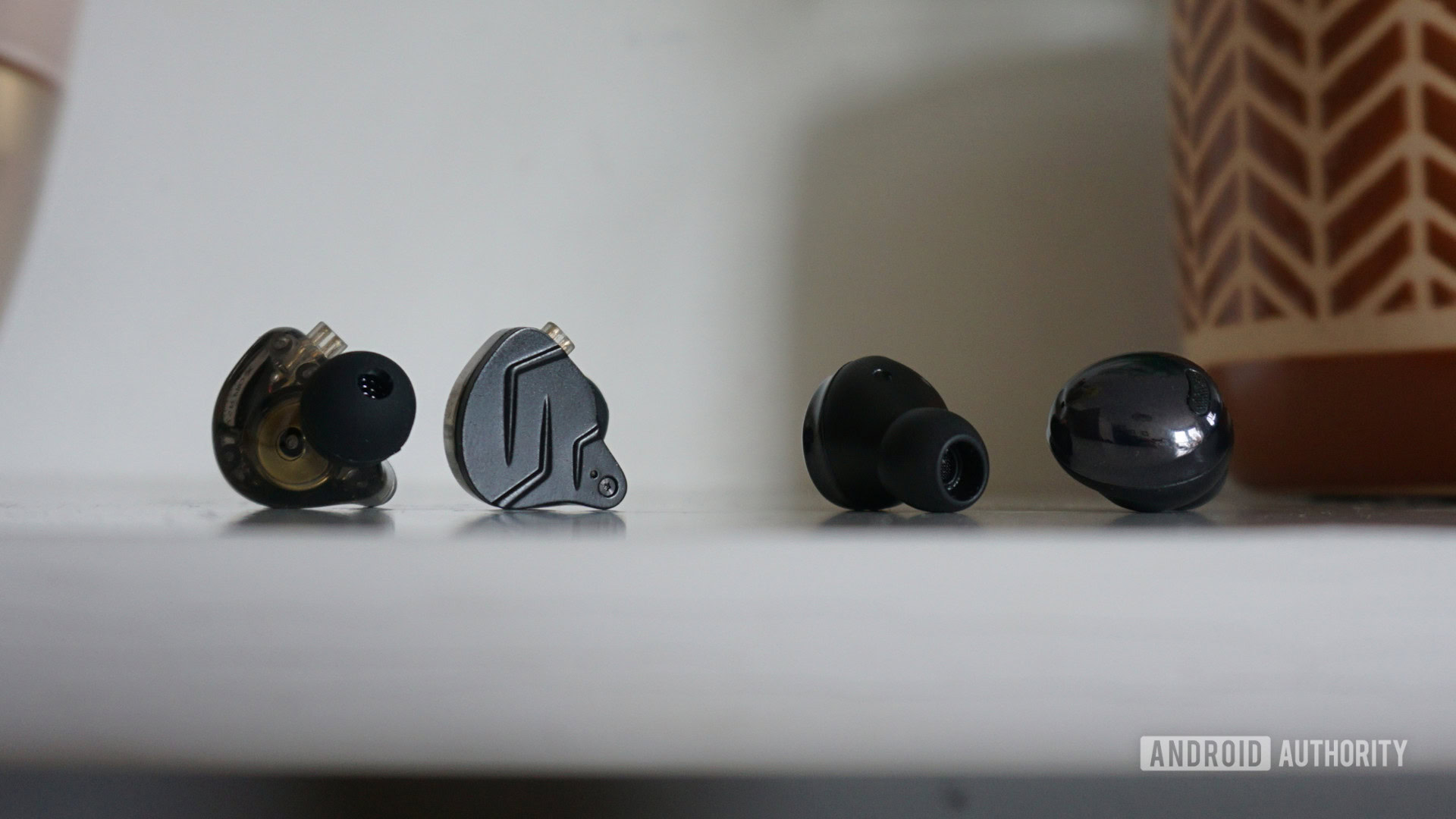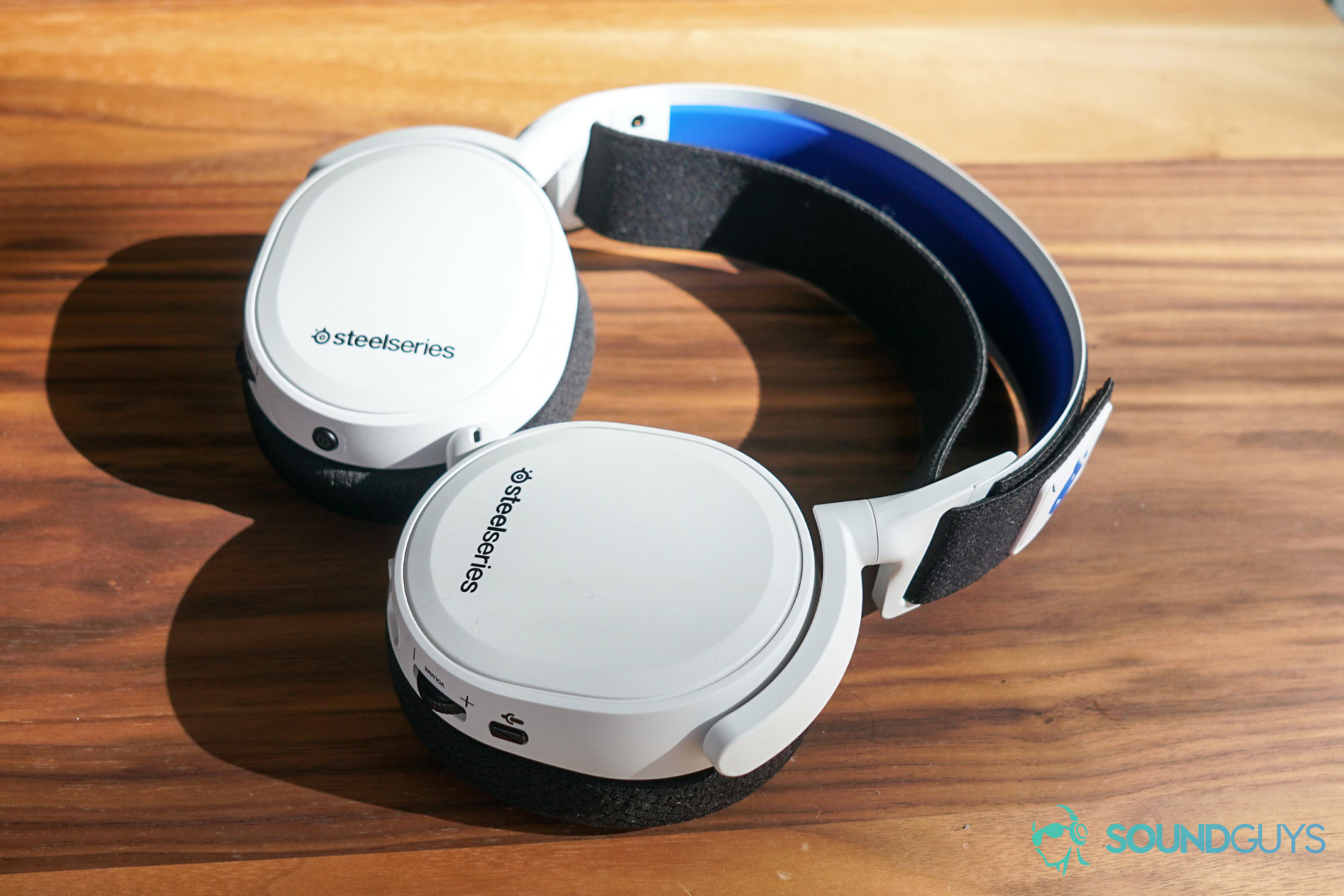Affiliate links on Android Authority may earn us a commission. Learn more.
IEM vs earbuds: What's the difference?

The headphone market is a forever-changing and difficult place to navigate. In addition to over-ear headphones and true wireless earbuds, in-ear monitors (IEMs) are becoming an increasingly popular choice. With our ears bombarded by the cacophony of modern life, it makes sense that people are eager to isolate their music.
However, it’s confusing that IEMs and earbuds share a lot of similar features. It’s for that reason that some earbuds are now billed as IEMs, and vice-versa. It’s understandable. They look exceptionally alike and are small enough to store in your pocket. They both also prioritize noise cancelation and rest closely in the ear. On the surface, in-ear monitors and earbuds appear exceptionally similar. In order to truly realize the difference between IEM vs earbuds, you have to delve a little deeper into the details.
What are IEMs?

Generally speaking, IEMs are earphones designed primarily for use within studio and live entertainment settings. In-ear monitors come in all shapes and sizes. Wired IEMs are most common and tend to be more affordable, while wireless versions are more expensive and require an external receiver. IEMs also come in two different designs — universals and custom in-ear monitors (CIEMs). Universals are a fixed shape and usually come with silicon or foam ear tips. This type is most similar to conventional earbuds, as their generic shape will fit most people’s ears. They also tend to be more affordable than CIEMs. That’s because CIEMs require a trip to an audiologist to take a cast of your inner ears. Despite the added cost, they’re much more effective at creating a seal between your eardrums and the outside world. This prevents excessive environmental sound from disrupting the audio feed.
CIEMs are more expensive than universal IEMs and also require a trip to an audiologist to take a cast of your inner ears.
Their bespoke design means that CIEMs rest more securely in your ears than universals, preventing drop-outs. This is especially welcome for performers, who generally need to move around a lot on stage. They also provide a flatter frequency response than consumer earbuds. That’s helpful, as IEM users can hear an accurate representation of the audio feed being put through them. Not only that, but performers can communicate with a sound engineer without unwanted noises interrupting their signal.
IEMs vs Earbuds: What’s the difference?

Comfort
Universal IEMs and earbuds often claim an ergonomic shape in varying sizes and designs. They’re generally user-friendly and offer a good enough fit for most people. This is in contrast to CIEMs, which are tailor-made for a specific individual’s ears. An audiologist takes a silicon mold of the inner ear and forms it into a unique set of in-ear monitors. In addition to a more secure fit to cancel out unwanted noise, CIEMs are much more comfortable than universal IEMs or consumer earbuds. They’re also far less likely to fall out of your ears or come loose when moving around.
However, a major difference between IEMs and earbuds is that most affordable in-ear monitors are wired. Performers need latency to be as low as possible between the audio source and their ears. Wired connections still offer the lowest latency possible, between 5-10ms. Unfortunately, that means having to conceal wires up your shirt or letting them hang loosely, which can be inconvenient while performing. Most IEMs use 3.5mm to 0.75mm/0.78mm 2-pin, MMCX, or recessed 2-pin connectors. While there’s no notable difference in sound quality, it does mean IEMs can become disconnected from their wires. However unlikely the scenario, this makes them less secure than traditional wired earbuds.
It’s also worth noting that most commercial earbuds are moving away from wires entirely, embracing the latest in Bluetooth connectivity. The convenience of listening to music and being able to move freely from your source device is attractive indeed. It’s also much more comfortable to not have wires resting against you while listening to music.
Noise isolation
The fight between IEM and earbuds for best noise isolation is a forever-changing battleground. While it’s reasonable to expect that all IEMs would provide better noise reduction, some cheaper universal IEMs may leave users wanting. That’s because universal IEM’s generic shape doesn’t always provide a secure fit. In-ear monitors also lack power to support active noise cancelation (ANC.) Some earbuds, therefore, like Apple AirPods Pro 2nd Gen, can easily outmatch some universal IEMs for noise isolation. Adaptive ANC technology gives consumer buds a tactical advantage here. By using internal and external facing microphones, ANC-capable earbuds can drastically reduce unwanted noise where passive noise reduction struggles.
IEMs provide passive noise isolation, while true wireless earbuds use battery power to support ANC.
The Samsung Galaxy Buds Pro 2, for example, are exceptionally good at registering low-frequency drones effectively mute. ANC-capable buds also benefit from transparency mode, which means you don’t have to remove your buds to hear the outside world. However, if you want to experience a truly immersive soundscape, look no further than CIEMs. Securing a snug fit with your earbuds or IEMs is the best way to cancel out unwanted sounds. CIEMs are champions at passive noise cancelation, offering users a truly isolated sound environment.
Sound quality
IEMs use a variety of different audio drivers compared to earbuds. Budget IEMs often host just a single driver in each ear, while more expensive models can have as many as 18 per ear. When a single driver produces sound across a wide range of frequencies, the audio signal can become muddy. Having multiple frequency-specific drivers in each ear can vastly improve the definition of bass, middle, and treble frequencies.
Dynamic drivers are the most common and cost-effective driver type. They produce good-sounding audio without the need for an external amplifier. However, those seeking high-res audio might want IEMs that use balanced armature drivers. These power a tiny vibrating magnetic reed that transmits electrical signals onto a stiff aluminum diaphragm. This keeps the audio band free from unwanted resonance with little-to-no noise.
Dynamic, balance armature, planar magnetic and electrostatic drivers play a leading role in audio quality.
More ardent audiophiles may be interested in planar magnets. They work similarly to dynamic drivers, except they immerse a thin film-like diaphragm between multiple magnets. This generates greater sensitivity in the audio band and, therefore, finer audio detail. Electrostatic drivers may also be paired in a tribrid format alongside dynamic and armature drivers. These suspend a swinging membrane between two perforated metal plates in order to decrease distortion. This results in a clearer audio signal, albeit at the cost of using more power.
Securing a good fit with your IEMs or buds also affects audio quality. Increased isolation generates a stronger bass response, resulting in clearer bass frequencies. This also produces a wider overall soundscape. When it comes to the IEM vs earbuds battle, IEMs reproduce a clearer stereo-audio field.
Frequency range
The main difference between IEMs and earbuds often boils down to frequency response. IEMs are often billed as having a “truer sound.” This means there is little-to-no post-processing to emphasize bass, middle or treble frequencies. While that may be true for some IEMs, it isn’t the case for all. Furthermore, lots of commercial earbuds have exceptionally flat frequency responses. The Apple AirPods Pro 2nd Gen, for example, has a frequency curve similar to the Sennheiser IE 600, IE 900, and Shure SE215. In some instances, Apple AirPods Pro 2nd Gen perform closer to SoundGuys’ desired studio curve than all three IEMs.
IEMs are often billed with having a truer frequency response than earbuds, but that isn't always the case.
That said, lots of earbuds do apply post-processing to enhance a user’s audio experience. Samsung Galaxy Buds Pro 2 and Sony WF-1000XM4, for example, boost low-end frequencies below 500Hz. This is historically true for exercise buds too, where low drones are an unwelcome distraction from your workout. Bass boosting offers lots of benefits, provided it isn’t totally overpowering. For example, modern music genres such as pop, rock, and dance, rely heavily on prominent bass lines. IEMs could leave everyday music fans wanting, sounding generally thinner than the audio provided by earbuds.
Cost
The range in price between IEMs and earbuds can be vast. A budget pair of ZSN Pro X IEMs will set you back a mere ~$30, while CIEMs can cost anywhere between $300 and $2,000. That compares to commercial earbuds, such as Apple Airpods Pro Gen 2, which cost roughly $249.
However, cost doesn’t always dictate quality. ZSN Pro X IEMs are considered excellent value for money, albeit with a slightly large emphasis in the treble frequency range. Budget IEMs could therefore serve as a noise canceling alternative to traditional wired headphones. Wireless buds are usually more expensive than their wired counterparts due to all of the extra features, including ANC, that you receive. CIEMs are likely the most expensive choice simply because they’re tailor-made and require a trip to an audiologist. These appointments often include a consultation, ear-cleansing, and hearing test, which further adds to the cost.
Should you get in-ear monitors?

Generally speaking, IEMs are used by audio engineers, musicians, and audiophiles. This is because sound is transmitted directly into the ear, as opposed to diffusing the sound. This results in a tighter, less sibilant bass response, in addition to less disruption from unwanted noise. Their frequency curve also generally attempts to remain even so that music sounds true to its source.
Due to their large emphasis on hearing protection, performers stand to benefit the most from IEMs. Music festivals, for example, amplify audio at very high decibels. IEMs are an effective barrier between a performer’s ears and potentially harmful levels of audio. Not only that, but it’s also important for live entertainers to hear their own audio source above their music. Conventional monitor wedges work, but they do nothing to cancel out unwanted noise. Using IEMs means that performers can customize exactly what they want to hear from their audio source, while removing any sounds they don’t want.
IEM frequency curves generally attempt to remain even so that music sounds true to it's source.
When it comes to IEMs vs earbuds battle, most people would likely choose the convenience and features offered by wireless buds. ANC, spatial audio, voice assistant, Bluetooth multipoint, and hands-free phone calls all make our everyday audio experiences easier. On the other hand, IEMs come with little-to-no additional luxuries. They may offer high-res audio, but most people won’t benefit from using IEMs. Music streaming services are consumers’ first point of call for on-the-go listening. Given that Spotify’s standard audio streams at 96kbps, most people won’t benefit from owning a high-res set of IEMs. Budget earbuds will likely be more than good enough for most.
Are IEMs good for gaming?

There are arguments for and against using IEMs for gaming. The level of isolation provided by IEMs makes them an attractive addition to any gamers setup. It’s much easier to immerse yourself in a game without unwanted external sounds bleeding into your headphones. The flat frequency response of IEMs also means that you hear all of the audio effects as the designer intended. No excessively boomy gunshots, sibilant in-game dialogue, or ear-splitting handbrake turns.
IEMs are located too far inside the ear to take advantage of virtual surround sound.
However, game developers look set to further incorporate virtual surround sound into their immersive technology arsenal. The problem is that IEMs are located too far inside the ear to make this sound realistic. Most surround sound has been designed with over-ear headphones in mind. That means that the space between the speakers and a user’s eardrums is specifically utilized to generate an immersive soundscape. The same can’t be so easily achieved with IEMs. Their close proximity to the eardrums means IEMs have less of a sound-stage. This is necessary for games to sound expansive in three dimensions, allowing you the pinpoint sounds around you in a sphere.
Wireless IEMs used for live performance transmit audio data via radio frequencies instead of over Bluetooth. However, Bluetooth adapters, such as the CCA BTX, can be used in conjunction with IEMs to connect to Bluetooth devices.
AirPods are earbuds, not IEMs. The definition of “in-ear monitors” dictates that monitor speakers, which provide a flat frequency response, should sit specifically inside the ear canal.
IEMs boast a wider array of high-quality audio drivers than earbuds. They’re also usually well-built using silicon or resin and can be custom-made for a specific individual.
Generally speaking, you do not need a DAC in order to use IEMs. In some instances, the additional power of a DAC will actually introduce distortion into your signal. The only real benefit of using a DAC is if the impedance of your IEMs is causing issues with volume.
Only so far so as to feel snug, secure, and comfortable. There shouldn’t be any pain or discomfort when your IEMs are resting in your ears, and you should never forcefully insert them. If you’re struggling to attain good isolation, try changing the size of the ear tips.